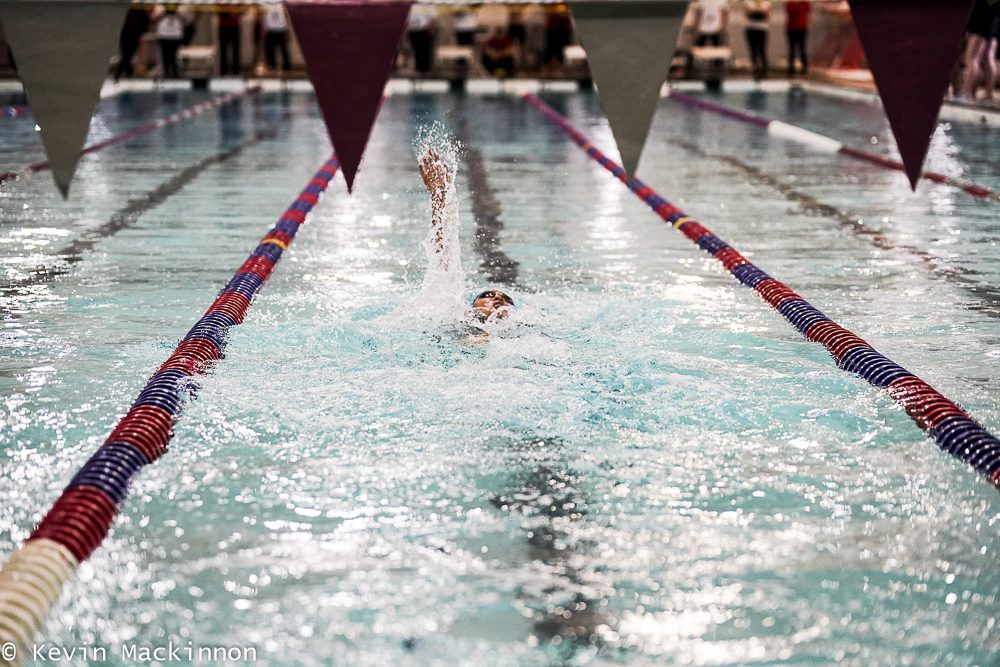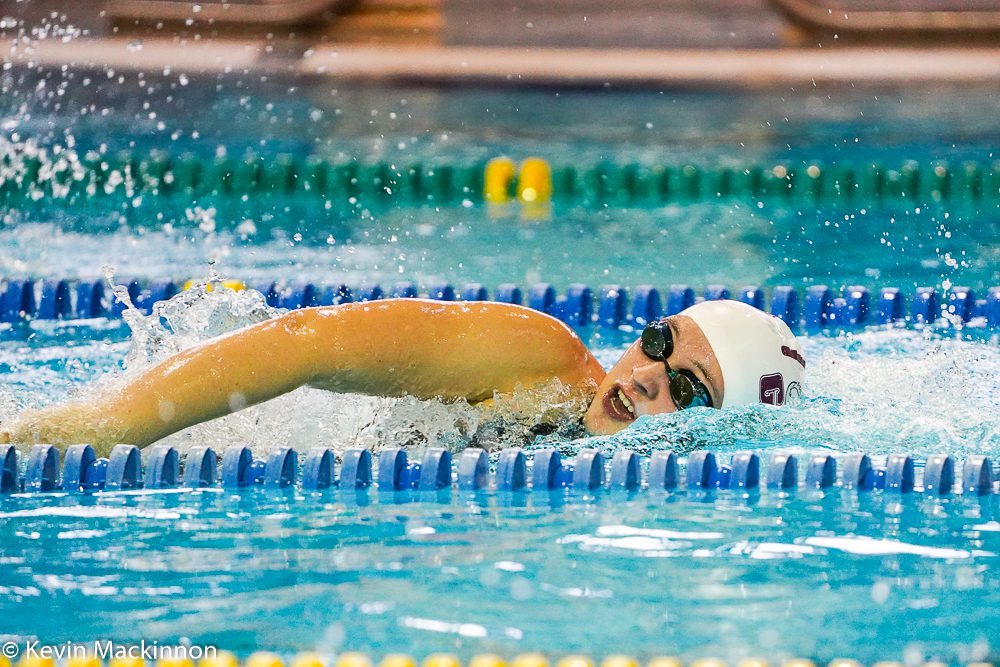Time to find a Masters Swim Race
Triathletes regularly compete in running and cycling events - here's why a Masters swim meet might be a good idea, too.

If a triathlon starts for you once you reach dry land, you need to adjust your attitude. One way to do that is to include a Masters swim meet in your schedule. You’ll get a fitness return from it, you’ll swim faster than you have in the past and, best of all, you will enjoy it.

By Clint Lien
When it comes to the bike and run, most triathletes can reel off data bases of their best times, course records, highest watts, multiple threshold numbers and average paces. They’ll show you bell curves, bar graphs and multi-coloured pie charts. Now ask those same triathletes what their best time for 400 m in the pool is and, as many times as not, you’ll get a blank stare in return.
Observed behaviour has the tendency improve. That’s why we set our best times at the local 10K – everyone’s watching and the times are recorded for all to see. Apply the same to your swimming.
Entering a Masters swim meet has much in common with signing up for a 10K. The prices are reasonable (usually between $10 to $30), you’re surrounded by people who share a passion for the sport and there’s little in the way of judgement. You’ll find most folks are focused on their own performance rather than beating others. But, like the starting line of the 10K, when you’re standing on those blocks and the buzzer sounds, your desire to do your best comes to full bloom and you find yourself taking things to a new level and testing your limits.
Even if you’re not a member of a Masters swim group, entering a swim meet isn’t a problem. You can join the Masters organization as an unattached swimmer. For the purpose of the meet, you might be placed in a catch-all group.
Once you’ve lined up your meet and chosen your events – you can choose as many as you want (most triathletes go for the distance freestyle events, for obvious reasons) – then you will want to consider a little preparation in the same way you might prepare for a 10K.

You’ll want to taper – bring down your swim volume, but maintain some intensity in the week leading up to the meet. One or two weeks before the meet do several test races, with dive starts from the blocks, during practice.
Diving from the blocks for the first time can be intimidating, so make sure you practice that before race day. Describing how to properly do a dive start is next to futile. You need to see others do it and then do it yourself – often. There are several good YouTube videos that breakdown the different types of dive starts clearly and effectively. You can opt for a wall start at most meets, but few do. Do your best to learn to come off the blocks. Keeping your goggles from rolling down to your chin, or filling up with water, isn’t hard but does require strategy and practice. (Remember to tuck your chin as you hit the water.)
I recommend putting your goggles on before putting on a cap, then pulling the cap down over the top lip of your goggles, which you should cinch a little tighter than usual. One of the reasons you want to engage in practice races is to get a sense of pacing. If you’re exhausted 100 m into a 400 m race, the next 300 m will feel like purgatory. Try to negative split your races (make the second half faster than the first). You probably won’t, but you’ll be glad you tried.
Finally, let go of any notion of being embarrassed about your “slow” swimming. You’ll be placed in heats with swimmers who have listed times comparable to your own. Even if you’re the slowest there, you’ll be cheered on in the same way the walkers at the 5K are. Your fellow swimmers want you to succeed.
This story originally appeared in our March, 2016 issue of Triathlon Magazine Canada.
Clint Lien is the “Coach Dude” for Mercury Rising Triathlon, www.mercuryrisingtriathlon.com
